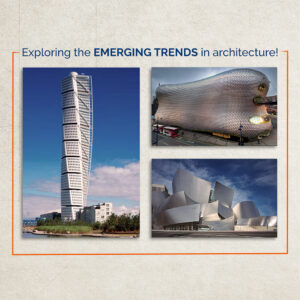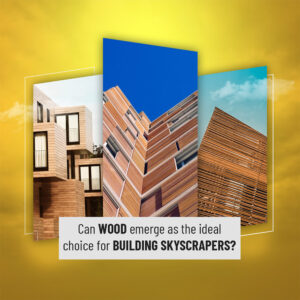
As an architect, you design for the present, with an awareness of the past for a future which is essentially unknown
– Norman Foster, English architect and designer
Civilization is known and remembered by its art, culture and architecture. Our architecture blends science and aesthetics uniquely to demonstrate the richness of our culture. India possesses some of the finest and diverse specimens of architecture globally, such as the Taj Mahal, the Sun Temple at Konarak, and Victoria Memorial, to name a few only. While we marvel at these monuments, we have deep respect for the sheer geniuses of the architects for their invaluable contribution in giving birth to these world-famous structures.
Let us enumerate some master Indian architects who have garnered global fame and made our country proud.
Balkrishna Vithaldas Doshi (born August 26 1927): A recipient of the Pritzker Architecture Prize, Padma Shri and Padma Bhushan, B.V. Doshi is a pioneer of modernist and brutalist Indian architecture. He derives his inspiration from historic Indian monuments and the works of famous European and American architects.
His best works include IIM Bangalore, IIM Udaipur, NIFT Delhi, CEPT University and the Aranya Low-Cost Housing Development in Indore.
Laurie Baker (March 2 1917 – April 1 2007): Popularly known as the “Gandhi of Architecture”, this legendary British-born Indian architect is known for his cost-effective, energy-efficient architecture that maximized space, ventilation and light with utmost aesthetic sensibilities. Baker was awarded the Padma Shri in 1990, the UN Role of Honour in 1992, and a host of other accolades and recognitions.
His best works include The Laurie Baker Center in Vilappilsala, Kerala and Indian Coffee House in Trivandrum.
Brinda Somaya (born June 28 1949): The first woman ever to win the Wienerberger Golden Architect award in 2007, Brinda is a renowned Indian architect and urban conservationist. Some of her best works include Reconstruction of Bhadli Village of Bhuj, the restoration of St. Thomas Cathedral in Mumbai, and Nalanda International School’s unique design near Vadodara in Gujarat. Other notable awards include the UNESCO Asia-Pacific Heritage Award in 2004 and the Grohe NDTV Design and Architecture Award in 2017 for Outstanding Industry Contribution.
Charles Mark Correa (born September 1, 1930-June 16, 2015): He was a renowned Indian architect and urban planner, revered for his Modernist tenets in his building style. He is considered one of the influential pioneers of modern architecture in post-independent India.
His best works include the Gandhi Smarak Sangrahalaya at Sabarmati Ashram in Ahmedabad, Cidade De Goa in Goa and Kanchanjunga Apartment in Mumbai. He was awarded the Padma Vibhushan, Gomant Vibhushan and Royal Gold Medal for architecture, to name a few.
Hafeez Contractor (born June 19 1950): Awarded the Padma Bhusan in 2016, he has designed many landmark skyscrapers in India. He is the architect of the three tallest buildings in India: The 42 in Kolkata and The Imperial twin towers in Mumbai. Contractor has also earned worldwide acclaim for his exuberant cricket stadium designs, railway stations, educational institutes and majestic airport terminals.
Some of his best works: Besides the above luxury buildings, he is also credited with the redesigning of Mumbai Airport, Hiranandani Gardens at Mumbai, NICMAR at Pune, Rusi Modi Centre of Excellence at Jamshedpur and the Empress City in Nagpur.
Raj Rewal (born November 24 1934): This top architect and urban design consultant is known for his humanist approach to architecture that responds to the complexities of urban development. His contribution to Indian architecture is characterized by a concern for climate sensitivity and promoting craftsmanship and technologies. His many awards include the Gold Medal 1989 by the Indian Institute of Architects, Lifetime Achievement Award 2001 by The Institution of Engineers (India) and John Michael Kohler Lifetime Achievement Award.
His best works include Asian Games Village and Parliament Library in New Delhi, Coal India Complex at Kolkata, Indian Embassy at Beijing and Bio Port at Sohna.
Rahul Mehrotra (born 1959): The multi-faceted Mehrotra is the Founder Principal of architecture firm RMA Architects of Mumbai and Boston, and is the Professor of Urban Design and Planning and Chair of the Department of Urban Planning and Design at the Harvard Graduate School of Design in Cambridge, Massachusetts. He is also one of the founding members of the Kala Ghora Rejuvenation Movement.
Some of his best works include The Taj Mahal Visitor Centre at Agra, KMC corporate office at Hyderabad, Hathigaon at Jaipur, House in a Tea Garden at Conoor and restoration of the Chowmahalla Palace complex at Hyderabad.
Creating master architects for tomorrow
Since its inception in 2010, the NAAC-accredited and MAKAUT-affiliated OmDayal Group of Institutions has emerged as one of the leading architecture colleges in West Bengal. Inspired by the achievements of premier Indian architects, the full-time B.Arch course offered by us has been generating top-notch architects since its introduction in 2012. The curriculum is approved by AICTE and COA. It aims to take architecture education beyond the realms of buildings and propel it into developing a sustainable future.
We are the first private architecture college offering M.Arch in Urban Development. Approved by COA, the two-year M.Arch course is entirely at par with global standards with a 20 seat allotment. We teach our students to seek novel and contemporary solutions in line with the modern tenets of architecture.
For more information, visit www.omdayal.com.




